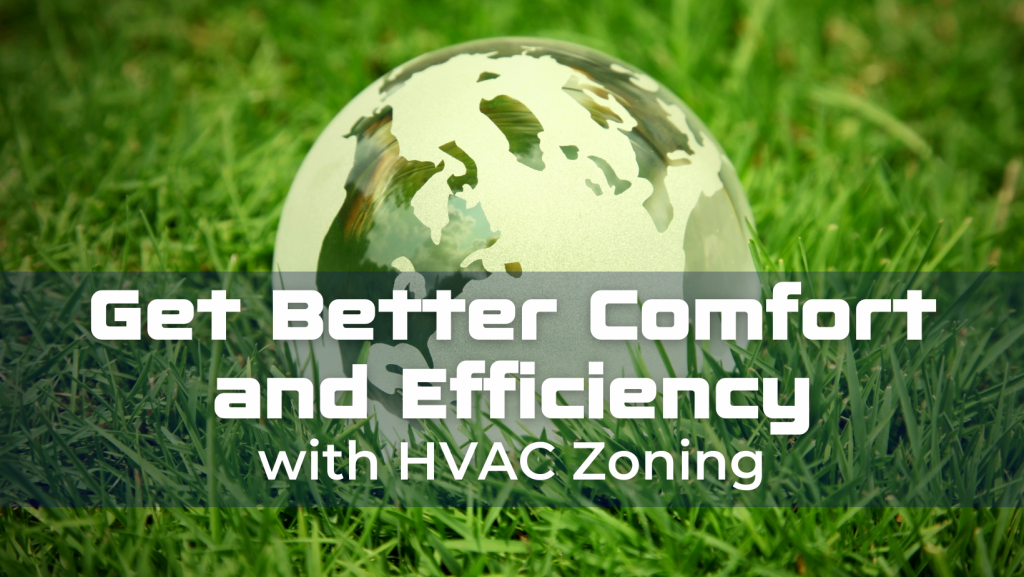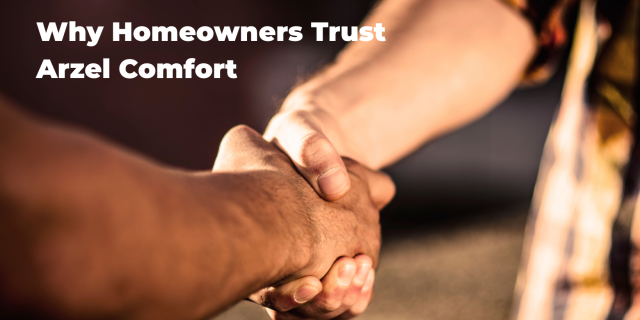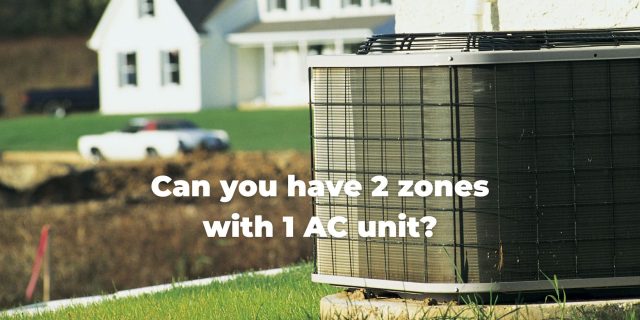
Get Better Comfort and Efficiency with HVAC Zoning

Do you have one of those homes where some rooms are too hot while others are too cold? Honestly, that’s the case for most homes. Maybe you also feel like you’re wasting energy to heat or cool spaces when you aren’t using them. If you want better comfort or better energy efficiency – or both! – it’s time to consider zoning. Here’s how you can get better comfort and efficiency with HVAC zoning.
What Is HVAC Zoning?
HVAC zoning is a process that divides your home into a few different zones and then heats or cools those zones separately. Think of a two-story home. The second floor is almost always warmer than the first one. It makes sense, too. Heat rises. The top floor of the house has more exposure to the sun, too. If the HVAC equipment is in the basement, the top floor is also farther away from the air conditioner.
Regardless of the reasons, the solution for a hot second floor is HVAC zoning. With zoning, you could set a thermostat for the first floor and one for the second floor. If both thermostats are asking for heat, the equipment will send heat everywhere. But when only the first floor needs heat, dampers will close off the second floor so it doesn’t get extra heating it doesn’t need. That’s one way you can get better comfort and efficiency with HVAC zoning.
Can I Close My Registers Instead?
Sometimes homeowners who don’t want to heat and cool an unused space will close the registers in that room. Unfortunately, this is not a great way to implement zoning. Along with keeping the heat out of the unused space, closing the registers reduces airflow entirely. The closed off area will be filled with stagnant air that allows mold to grow. It’s an even bigger issue if the area has any plumbing, as pipes could freeze without adequate heat. By installing zoning instead, you can keep air flowing without wasting heating and cooling.
Better Comfort with HVAC Zoning
What does it mean to be more comfortable? Is climate control really that important? Well, the short answer is yes. Sleep psychologists say that the best sleep temperature is 60-67° F (15-19° C). We all know how important sleep is. You probably don’t want your whole home to be 60°, either. Keeping your sleeping area cool is just one way that zoning gives you better comfort.
Another important comfort factor is the location of your home. Parts of your home could be boiling hot while others are cool because of factors like the direction your house is facing, or how much shade it gets. For example, if you have a south-facing window in the Northern Hemisphere, that room is probably warmer than others. Without zoning, you are left with two bad options. You can either turn down the thermostat and be comfortable in the sunny room, or turn up the thermostat and be comfortable on the other side of the house.
When you add zoning to your home, you can be comfortable in both areas. Why? Let’s say the south side of the house is zone 1, and the north side of the house is zone 2. Both zones will get some heat, but when it’s comfortable in zone 1, dampers will close that area of ductwork so that only zone 2 gets more heat.
There are countless examples of zoning configurations that increase comfort. You’re probably already thinking about how you could divide your home into zones. You’ll get better comfort with HVAC zoning because you will have more precise temperature control. Finally, you can set every space to the temperature you want.
Increasing Energy Efficiency with Zoning
If you got this far, you already know how zoning helps with better comfort. What about efficiency? Well, HVAC zoning is a great way to increase your energy efficiency. After your zoning system is installed, you’ll have a separate thermostat for each zone. Now you can use those thermostats to keep every zone comfortable when you’re using it, and to save energy when you’re not.
You may be thinking that you use your entire home. Great! Think about when you use which rooms. You probably use the sleeping areas at night and the living areas during the day. If no one is home during the day, the entire house is unused for several hours. To increase your energy efficiency, you just have to stop heating and cooling your home when you’re not using it. Installing zoning gives you more precise control so you can heat and cool just the areas you need. That’s how you can get better comfort and efficiency with HVAC zoning.
Ready for Better Comfort and Efficiency?
To start the HVAC zoning process, sign up for a consultation with an HVAC contractor. Your contractor will evaluate your home and your comfort issues, then design a solution that works for you. Use our contractor locator to find a local HVAC contractor today!
Topics
- Energy Efficiency (17)
- Homeowner Tips (20)
- HVAC Zoning (25)
- Indoor Air Quality (2)
- Indoor Comfort (33)
- Uneven Temperatures (5)
Recent Posts
View AllYour heating and cooling system should create a comfortable home environment that you can depend on. Sometimes a standard HVAC system just doesn’t cut it. That’s where Arzel Comfort comes in. Our zoning systems work with your existing HVAC equipment to give you better comfort and control. But we go beyond just comfort. Homeowners trust […]
Everybody needs to heat and cool their home, and no one likes to pay for it. Even so, most of us are wasting energy to make our homes comfortable. This guide to HVAC zoning will show you how to avoid this pitfall. At the same time, you’ll get better comfort in your home. Imagine lower […]
Creating Multiple Comfort Zones with One AC Unit Can you have two zones with one AC unit? The answer is a resounding yes. With HVAC zoning, you can transform your home into multiple comfort zones, each tailored to your preferences. Instead of relying on a single thermostat to control the entire house, HVAC zoning uses […]
If you’re like most homeowners, you probably look for ways to save money on energy costs. Does HVAC zoning save money? We’ll explore that question here, so you’ll know what to expect if you decide to install HVAC zoning in your home. What Is HVAC Zoning? Let’s start with the basics. When you add zoning […]



